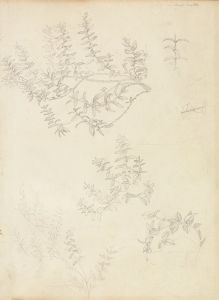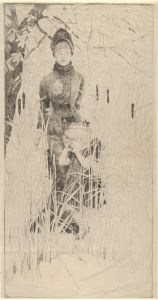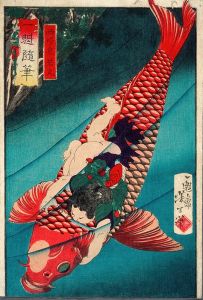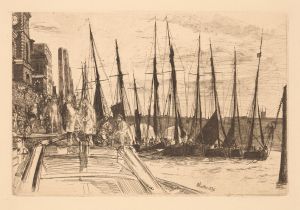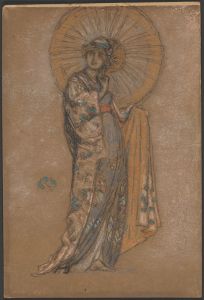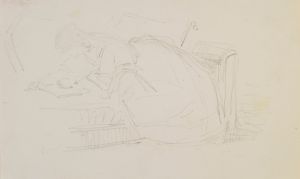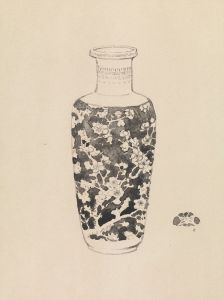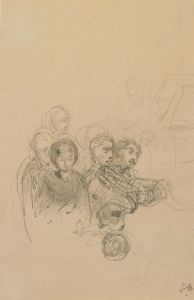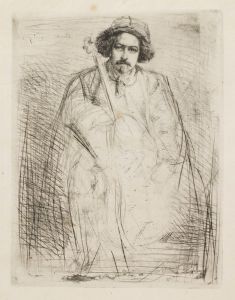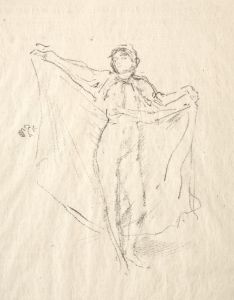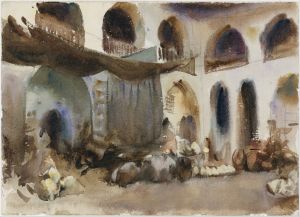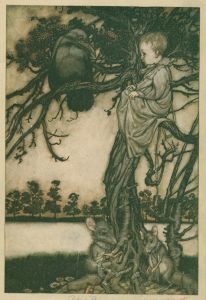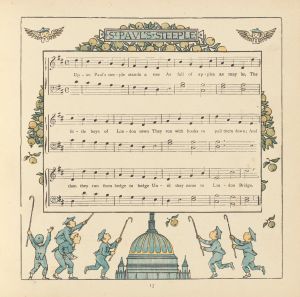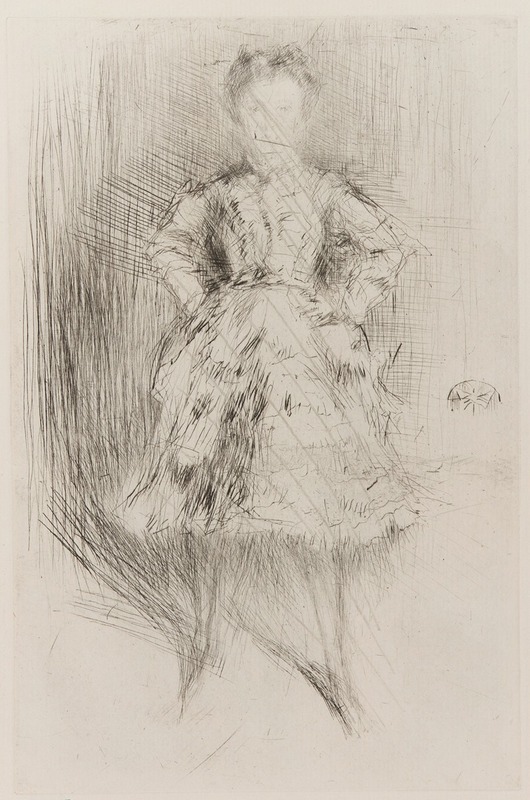
Elinor Leyland
A hand-painted replica of James Abbott McNeill Whistler’s masterpiece Elinor Leyland, meticulously crafted by professional artists to capture the true essence of the original. Each piece is created with museum-quality canvas and rare mineral pigments, carefully painted by experienced artists with delicate brushstrokes and rich, layered colors to perfectly recreate the texture of the original artwork. Unlike machine-printed reproductions, this hand-painted version brings the painting to life, infused with the artist’s emotions and skill in every stroke. Whether for personal collection or home decoration, it instantly elevates the artistic atmosphere of any space.
James Abbott McNeill Whistler was an American artist known for his significant contributions to the art world during the late 19th century. He is best remembered for his paintings and etchings, which often emphasized mood and atmosphere over detailed realism. One of his works, "Elinor Leyland," is a portrait that exemplifies his distinctive style and approach to portraiture.
"Elinor Leyland" is a portrait of Elinor Leyland, the daughter of Frederick Richards Leyland, a prominent Liverpool shipowner and art patron. The Leyland family had a significant relationship with Whistler, as Frederick Leyland was one of Whistler's most important patrons. This connection led to several commissions, including portraits of the Leyland family members.
The painting "Elinor Leyland" is a fine example of Whistler's portraiture, characterized by its subtle use of color and delicate brushwork. Whistler was known for his "tonalism," a style that emphasized the harmonious arrangement of colors and tones. In this portrait, Whistler employs a muted palette, focusing on soft grays and whites, which create a serene and contemplative atmosphere. The background is typically understated, allowing the viewer's attention to remain on the subject.
Whistler's approach to portraiture was influenced by his belief in "art for art's sake," a philosophy that advocated for the aesthetic value of art above its narrative or moral content. This is evident in "Elinor Leyland," where the emphasis is on the visual and emotional impact of the painting rather than on any specific story or symbolism. The portrait captures Elinor in a moment of quiet reflection, her expression calm and introspective.
The composition of "Elinor Leyland" reflects Whistler's interest in Japanese art, which he admired for its simplicity and elegance. This influence is seen in the painting's asymmetrical balance and the use of negative space, which contribute to the overall sense of harmony and tranquility.
Whistler's relationship with the Leyland family was not without its challenges. The most famous incident involved the Peacock Room, a dining room in Leyland's London home that Whistler was commissioned to decorate. The project led to a falling out between Whistler and Leyland due to disagreements over artistic control and financial matters. Despite this, Whistler's portraits of the Leyland family, including "Elinor Leyland," remain important works in his oeuvre.
"Elinor Leyland" is a testament to Whistler's skill as a portraitist and his ability to convey mood and character through his art. The painting is part of Whistler's broader body of work that continues to be celebrated for its innovation and influence on the development of modern art. Whistler's portraits, including this one, are appreciated for their subtle beauty and the artist's unique vision, which set him apart from his contemporaries.
Overall, "Elinor Leyland" is a significant work that highlights Whistler's mastery of portraiture and his contribution to the art world. The painting remains an enduring example of his artistic philosophy and his ability to capture the essence of his subjects with grace and sensitivity.





